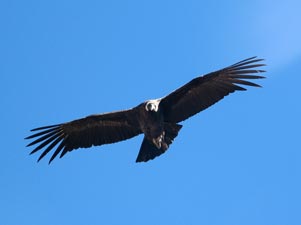
| Epilogue |
|
|
|
 |
 |
|
|
|
|
|
|
|
 |
It certainly was a wonderful trip ........ a strange creaking sound snaps me out of my daydreams. A pair of gang-gangs, their brilliant red crests glowing in the morning sunshine, have joined the sulphur-crested cockatoo in the tree and are calling. I finish my coffee, get up and give them the seed they want. We are back home again in the world of parrots not that of condors. We have our memories, life is good ... and the first ideas for our next adventure are starting to form in my head. |
 |